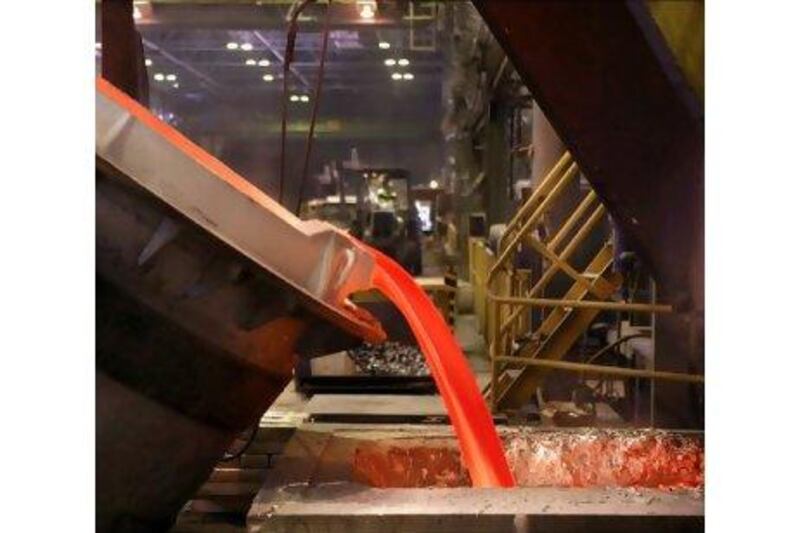The global backdrop: as they try to vault to the top of the world's aluminium industry, the Gulf's new producers will face stiff competition from huge Russian and Chinese companies. Here is a run-down on the heavyweights in the industry.
The consolidation and expansion of the UAE's aluminium industry is poised to send the country up the list of the world's top-producing nations.
Thanks to rising production at Dubai Aluminium (Dubal), the UAE was already the world's ninth-largest producer in 2009, according to the British Geological Survey. But the gigantic new aluminium smelter operated by Emirates Aluminium (Emal) near the Abu Dhabi-Dubai border could more than double that capacity, raising the country to fourth place behind China, Russia and Canada.
Abu Dhabi's Mubadala Development, which owns Emal in a 50-50 venture with Dubal, is in talks to consolidate both producers under a new holding company. Mubadala is a strategic investment company owned by the Abu Dhabi Government.
A Dubal-Emal merger would lay the groundwork for a further push that could yield increased capacity and acquisitions that expand the UAE's influence over the aluminium market.
"A deal would push them up the world rankings," says Robin Bhar, a senior metals analyst at Credit Agricole. "They are closing the gap between the individual leaders and themselves, but they're not knocking on the door of the big three yet."
Sitting atop the industry is Rusal, a Russian producer with its roots in the 1930s Soviet era. Today its assets stretch from Nigeria to China, and it dominates the global market in aluminium, alumina and bauxite. It is responsible for about 12 per cent of the world's output.
The US company Alcoa is the second-largest producer, operating in 31 countries. The company this month reported its biggest quarterly profit since 2008 thanks to higher aluminium prices.
Rio Tinto Alcan, which was created after a multibillion-dollar takeover in 2007, rounds out the top three aluminium giants. Higher prices are helping fund the Canadian group's increasingly acquisitive ambitions, which include takeovers of mines in Australia, South America and elsewhere.
But emerging players are already moving in on the market.
Collectively, Chinese producers have about 40 per cent of global capacity.
Not counting Emal and projects in Qatar and India, China accounts for about 78 per cent of the new smelter projects and major smelter expansions expected to come on line this year, according to Credit Agricole.
Yet China's output is also weighed down by some of the highest production costs in the industry. As a result, the outlook for Chinese producers is far from certain. Government-enforced power curbs in the country could yet force some producers to scale back production or even close.
In contrast, cheaper energy means Emal and Dubal are some of the lowest-cost producers.
One of the challenges for the UAE is that competitors are increasingly keen to muscle in on their own backyard. Alcoa and Rio Tinto Alcan plan smelter projects in the Middle East as they seek to access less expensive energy contracts. A new smelter started production in Oman recently, and Qatar's Qatalum started in 2009. A project in Saudi Arabia using local bauxite is also expected to begin operations soon.





